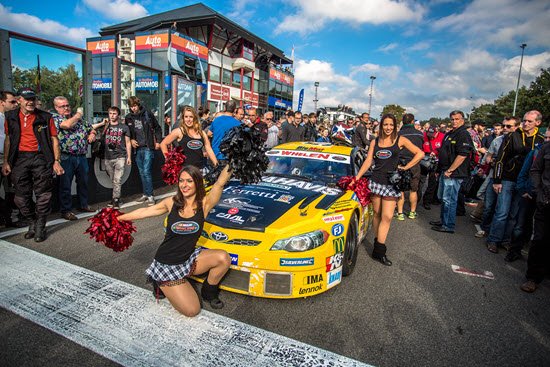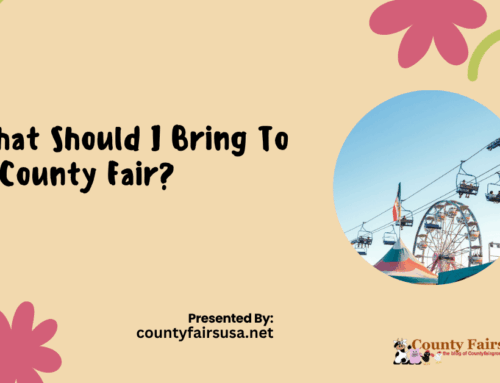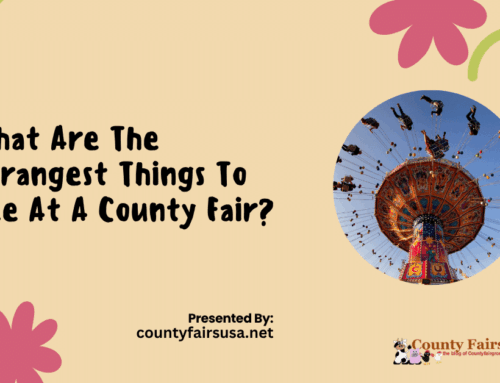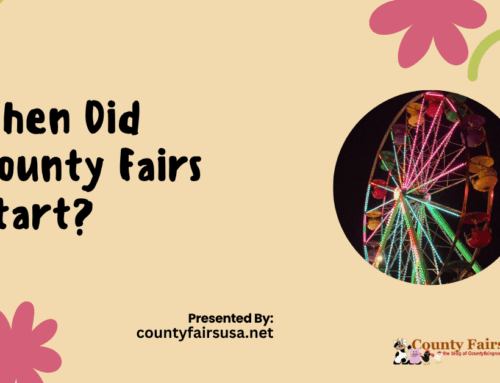From food festivals to amusement parks, events worldwide have embraced modern technology to improve visitor experiences. County fairs, known for their rich traditions and community spirit, are no exception. While the core elements—livestock shows, carnival rides, and fried treats—remain, fairs have gradually incorporated digital tools, sustainable initiatives, and high-tech attractions to stay relevant.
How County Fairs Have Adapted to Modern Technology & Trends
With mobile apps replacing paper maps, social media driving engagement, and cashless payments streamlining transactions, county fairs are evolving without losing their charm. Let’s explore how these beloved events have adapted to modern trends while keeping their nostalgic appeal intact.
1. Digital Ticketing & Mobile Apps: Making Entry Seamless
Gone are the days of standing in long lines to buy paper tickets. Many fairs now use digital ticketing systems that allow visitors to purchase tickets online and access them through their mobile devices. This not only reduces paper waste but also speeds up entry, making it more convenient for attendees.
Benefits of Digital Ticketing:
- Contactless Convenience – Visitors can scan QR codes at entry points instead of handling physical tickets.
- Reduced Fraud – Digital systems prevent counterfeit tickets, ensuring only legitimate purchases are honored.
- Real-Time Updates – Organizers can instantly update event schedules, ticket availability, and pricing changes.
Additionally, mobile apps have become a valuable tool for fairgoers. Many fairs now offer dedicated apps that provide interactive maps, vendor information, and event schedules. Some even include real-time notifications about weather conditions or special performances.
2. Social Media & Influencer Marketing: Expanding Reach
County fairs have embraced social media as a key tool for attracting visitors and keeping attendees engaged. Platforms like Instagram, Facebook, and TikTok have become powerful promotional channels, allowing organizers to share vibrant images, behind-the-scenes content, and live updates.
How Social Media Helps Fairs Stay Relevant:
- Event Announcements – Fair organizers use Facebook events and Instagram stories to keep audiences informed.
- User-Generated Content – Visitors share their experiences using event-specific hashtags, increasing visibility.
- Live Streaming – Platforms like TikTok and YouTube allow people to experience highlights in real time, enticing future attendees.
Influencer collaborations have also contributed to the success of modern fairs. Local content creators often showcase fair attractions, food offerings, and unique experiences, drawing in audiences that might not have considered attending otherwise.
3. High-Tech Attractions: Virtual Reality, Augmented Reality & Interactive Experiences
Technology has reshaped entertainment at county fairs, introducing experiences that were once unimaginable. While traditional rides and games still hold their charm, new attractions offer an immersive and futuristic twist.
Notable Technological Additions:
- Virtual Reality Rides – Some fairs feature VR roller coasters that simulate thrilling experiences without the need for large physical structures.
- Augmented Reality Scavenger Hunts – Using a smartphone, visitors can engage in interactive quests where digital elements overlay the real world.
- Holographic Shows – Some fairs have experimented with hologram performances, showcasing musical acts and historical reenactments in a unique way.
These additions not only appeal to tech-savvy younger audiences but also provide fresh entertainment options for returning visitors.
4. Sustainability Efforts: Eco-Friendly Practices at County Fairs
With growing awareness of environmental concerns, many county fairs have made sustainability a priority. Event organizers recognize the importance of reducing waste, conserving energy, and promoting eco-conscious choices.
Sustainable Practices Implemented at County Fairs:
- Biodegradable Food Packaging – Vendors have switched from plastic to compostable plates, cups, and utensils.
- Solar-Powered Rides – Some fairs have begun incorporating renewable energy sources to power attractions.
- Recycling Stations – Clearly marked bins encourage visitors to sort their waste responsibly.
- Farm-to-Table Food Vendors – Locally sourced food options reduce carbon footprints and support regional farmers.
Efforts like these not only help fairs reduce their environmental impact but also resonate with visitors who appreciate sustainable initiatives.
5. Cashless Payments & Digital Transactions
Handling cash at large events has become increasingly impractical, leading many fairs to introduce digital payment solutions. Attendees can now pay for tickets, food, and merchandise using their smartphones, credit cards, or preloaded wristbands.
Advantages of Cashless Transactions:
- Shorter Wait Times – Transactions are processed faster than cash exchanges.
- Increased Security – Reduces the risk of theft or lost cash.
- Easier Spending Tracking – Visitors can monitor their purchases digitally, avoiding overspending.
RFID wristbands have also gained popularity, allowing fairgoers to load funds in advance and make quick, tap-to-pay purchases throughout the event. This system benefits vendors as well, ensuring smooth operations and eliminating the hassle of handling cash.
6. AI & Data Analytics: Improving Fair Operations
Behind the scenes, artificial intelligence and data analytics have become essential tools for fair organizers. These technologies help improve logistics, security, and customer experience.
Key Uses of AI in County Fairs:
- Crowd Management – AI-powered cameras monitor foot traffic to prevent congestion.
- Predictive Analytics – Data insights help organizers anticipate peak attendance times and allocate resources effectively.
- Chatbots & Virtual Assistants – Many fairs have introduced AI chatbots on their websites to answer visitor questions in real time.
By using data-driven insights, fairs can optimize layouts, staffing, and event scheduling to create a smoother and more enjoyable experience for guests.







Leave A Comment